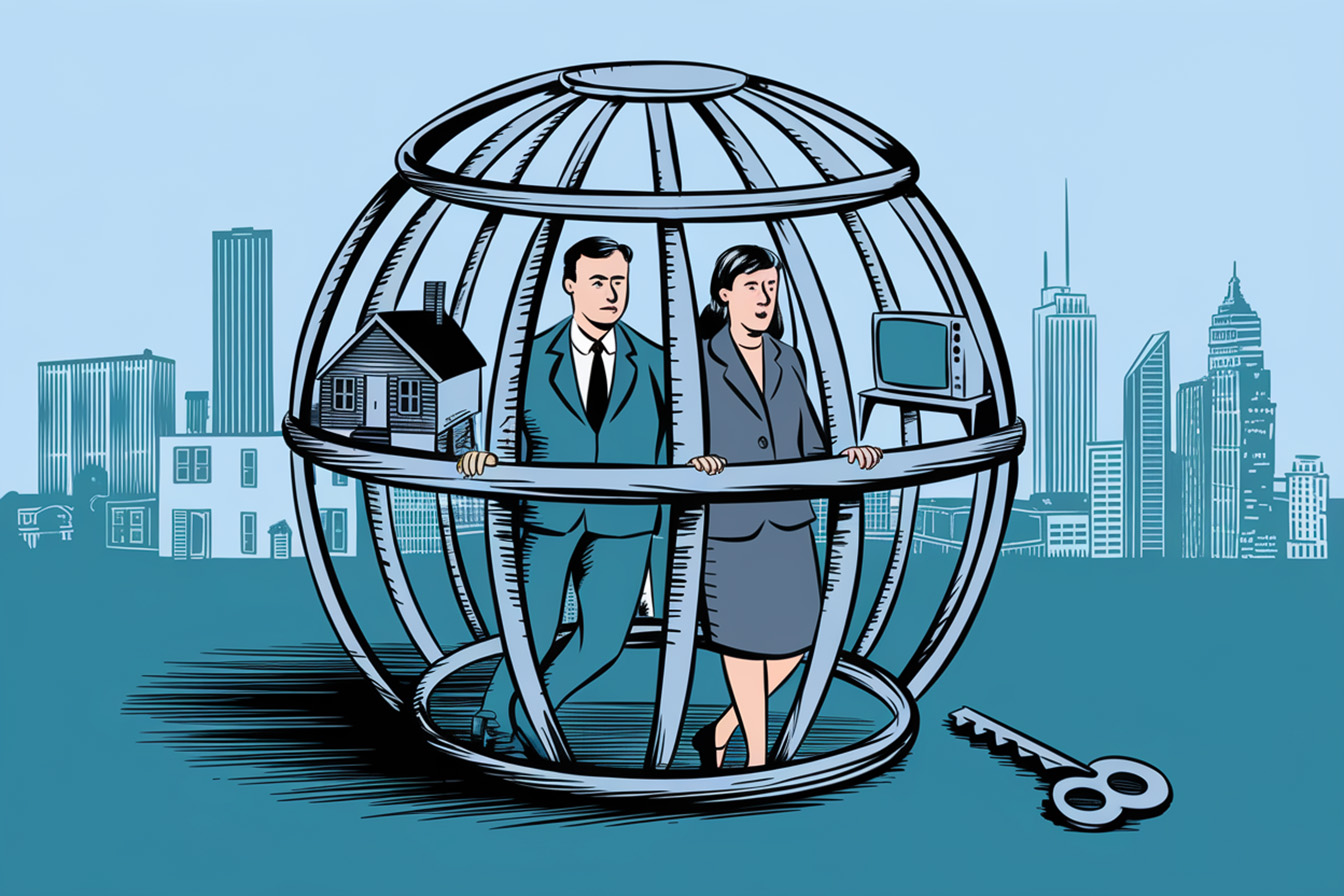Across the US, millions of middle-class households face a financial paradox. Despite earning comfortable incomes that place them well above national averages, they are trapped in a cycle of financial stress.
These individuals and families often appear successful on the surface—living in nice neighborhoods, driving reliable vehicles, and taking modest vacations. Yet beneath this veneer of prosperity lies a troubling reality: mounting credit card debt, minimal savings, and the constant pressure of living paycheck to paycheck.
This phenomenon, known as the middle-class money trap, affects many Americans who earn solid incomes but struggle to build lasting wealth or achieve true financial security.
Understanding the Middle-Class Money Trap
The middle-class money trap represents a financial paradox where individuals earning solid incomes can’t build wealth or achieve financial peace. Recent studies indicate that approximately 25% of Americans live paycheck to paycheck, with around 20% of households earning over $150,000 annually also experiencing this financial strain.
This trap often stems from lifestyle inflation, societal pressure, and a lack of financial education. As income grows, expenses tend to expand proportionally, creating a persistent cycle of financial strain despite increasing earnings.
Key Characteristics
The middle-class money trap manifests through several distinct patterns. Lifestyle inflation leads individuals to upgrade their living standards with each pay raise, leaving little room for savings.
High consumer debt has become normalized, with credit cards and loans funding everyday purchases. Financial planning takes a backseat to immediate wants while pursuing status symbols—bigger homes, luxury cars, designer goods—drains resources.
These factors create a precarious financial situation where even high earners live on the edge of their means.
Let’s examine six ways to break free from the middle-class money trap now:
1. Create and Stick to a Budget
Breaking free starts with gaining control over your cash flow through deliberate budgeting. Rather than viewing a budget as restrictive, consider it a spending plan that aligns your money with your values.
The 50/30/20 method offers a structured approach: allocate 50% of income to needs, 30% to wants, and 20% to savings and debt repayment. Digital tools like Mint or YNAB can automate tracking, making it easier to identify spending patterns and adjust accordingly.
The key is regularly reviewing and adjusting your budget to reflect your financial goals. If you can’t allocate 20% to savings and debt repayment, start with what you can and increase the percentage over time. The key is to spend your money on paper before the month begins, then follow the plan to gain control of your finances.
2. Reduce and Eliminate Debt
High-interest debt constantly drains financial resources. Taking a strategic approach to debt elimination can accelerate your journey to financial freedom. The debt avalanche method focuses on paying off high-interest debts first while maintaining minimum payments on other obligations.
Alternatively, the debt snowball method targets the smallest balances first, providing psychological wins that maintain motivation. Consider consolidating high-interest debts into a lower-interest personal loan or balance transfer card, but only if you’ve addressed the spending habits that created the debt initially.
3. Live Below Your Means
Living below your means doesn’t require extreme frugality – it’s about making intentional choices that align with your long-term financial goals. Consider housing costs: keeping them below 30% of your income creates room for saving and investing.
Transportation costs offer another opportunity for significant savings: a reliable used car can serve the same purpose as a new luxury vehicle while freeing up hundreds of dollars monthly. Focus on maximizing value rather than status and redirect the savings toward building wealth.
4. Increase Financial Literacy
Financial education serves as a foundation for sound decision-making. It involves understanding basic concepts like compound interest, investment diversification, and tax efficiency. Quality resources abound: “The Psychology of Money” by Morgan Housel offers insights into financial behavior, while websites like Khan Academy provide free courses on personal finance.
Following reputable financial experts on social media can help you stay informed about economic trends and strategies. The goal isn’t to become a financial expert but to develop the knowledge needed to make informed decisions about your money.
5. Invest Wisely
Building wealth requires putting your money to work through strategic investing. If available, start with your employer’s 401(k), especially if they offer matching contributions—this represents an immediate 100% return on your investment.
Beyond retirement accounts, consider low-cost index funds that provide broad market exposure. You might explore real estate investment trusts (REITs) or dividend-paying stocks as your knowledge grows. The key lies in starting early and staying consistent, allowing compound interest to work in your favor over time.
6. Develop Multiple Income Streams
Relying solely on a paycheck limits your financial potential. Explore opportunities to create additional income through side hustles aligned with your skills and interests. A graphic designer might offer freelance services, while someone with property management experience could invest in rental properties.
Digital products like online courses or ebooks can generate passive income over time. The goal isn’t to work endlessly but to build income streams that eventually provide financial independence.
Conclusion
Breaking free from the middle-class money trap requires a combination of mindset shifts and practical actions. You can transition from financial stress to security by implementing these strategies systematically.
Start with one area – perhaps creating a budget or paying down your highest-interest debt – and build momentum from there. Financial freedom isn’t achieved overnight, but each step forward moves you closer to your goals. Take action today to begin your journey toward true financial independence.
